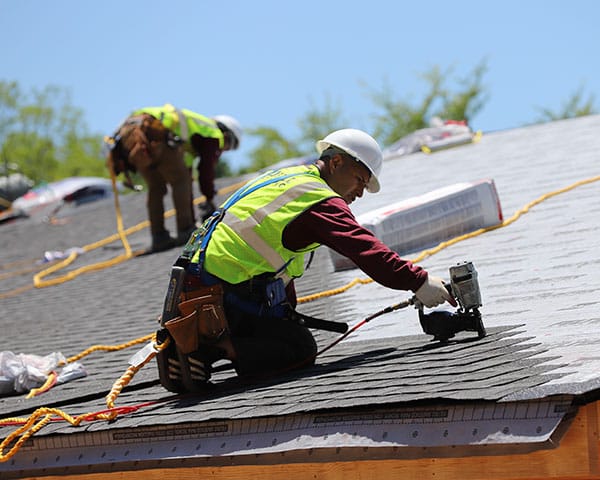Best Practices for Ensuring Appropriate Roof Covering Air Flow
Making sure proper roof ventilation is important for the longevity and effectiveness of a roof covering system. A well balanced intake and exhaust air vent proportion, frequently 1:300, plays a critical role, with intake vents ideally put at the reduced side of the roofing system for great air entry and exhaust vents at the top for warm air leave. Normal assessments to determine clogs and keep clear airflow are vital. Furthermore, maintaining insulation away from vents is essential to stop air flow constraint. Understanding these fundamental elements establishes the phase for even more comprehensive understandings into installment and upkeep methods that can significantly enhance your roofing system's efficiency.
Understand Air Flow Essentials
Properly recognizing air flow essentials is important for making sure the durability and effectiveness of roofing systems. Effective ventilation reduces moisture buildup and temperature extremes in the attic, both of which can result in substantial architectural damages gradually. A well-ventilated roof covering aids in stopping usual problems such as mold and mildew development, timber rot, and ice dams, which can endanger the honesty of the roofing products and the underlying structures.
The primary objective of ventilation is to assist in the motion of air, enabling a constant exchange between the indoor and exterior atmospheres. This equilibrium is attained through a mix of consumption and exhaust vents that collaborate to maintain optimum air movement. Consumption vents, commonly located along the soffits or eaves, permit fresh air to go into the attic room, while exhaust vents, typically positioned at or near the roofing system ridge, allow hot, damp air to leave.
Trick elements affecting the efficiency of roofing system air flow include correct placement, sufficient sizing, and making sure that both consumption and exhaust vents are unobstructed. Normal inspection and maintenance are critical to determine potential blockages, damages, or inefficiencies in the ventilation system, consequently protecting the roof's performance and resilience.
Sorts Of Roofing System Vents
Roofing system vents play a crucial duty in keeping effective attic room ventilation and, by expansion, the total health and wellness of the roof system. Different types of roofing vents are readily available, each with distinct advantages tailored to certain roof covering requirements.

Soffit vents are set up under the eaves and job in tandem with roofing system vents to make sure a balanced intake and exhaust system. By permitting cooler air to enter from below, soffit vents help with the expulsion of warm air through upper vents. Gable vents, situated on the outside walls of the attic, deal another efficient solution, especially in homes with gable roofs.
Assess Your Existing Ventilation

Following, think about the age and condition of your roof covering materials and ventilation parts. Older systems may not adhere to existing building codes or might have degraded Visit This Link gradually, decreasing their efficiency. Conduct a thorough exam to determine any indications of wear and tear, such as rust, damages, or gaps that can jeopardize the system's efficiency.
Additionally, gauge the attic temperature and moisture levels. High temperatures and moisture can indicate insufficient air flow.
Installment Best Practices
Effective setup of roofing ventilation systems is extremely important for ensuring ideal efficiency and longevity. Proper setup starts with comprehending the specific ventilation requirements of the roof and the building it covers. This includes determining the appropriate proportion of consumption to wear down vents, usually sticking to the 1:300 regulation, which specifies one square foot of air flow for every single 300 square feet of attic floor space.

Consumption vents should be installed at the roofing system's lower side, frequently in the soffits, to permit cool air to go into. Exhaust vents, on the various other hand, ought to be installed near or at the roofing's height to promote the departure of cozy, moist air.
Seal all vent links meticulously to avoid air leaks and potential water infiltration. Usage top notch products and comply with producer standards to make certain toughness and effectiveness. Furthermore, incorporating ridge vents with baffles can significantly enhance airflow performance by stopping wind-driven rainfall and snow from getting in the attic.
Eventually, exact installment of roof ventilation systems reduces prospective issues such as mold and mildew development, ice dams, and architectural damages, making certain the roofing's stability and the building's total health.
Routine Upkeep Tips
Uniformity in upkeep practices is fundamental to ensuring the long-lasting efficiency of roof covering air flow systems. Normal assessments are important, ideally carried out biannually-- in the springtime and loss. During these inspections, make certain that vents are without debris, nests, and various other blockages that might hamper air movement. Look for any type of indicators of moisture buildup or mold and mildew, as these can indicate inappropriate air flow or leakages (roofing companies gainesville florida).
Use a soft brush or a vacuum to remove dirt and debris from consumption and exhaust vents. Be mindful not to damage the vent displays or louvers throughout the process.
Appropriate insulation is similarly essential. Make certain that attic room see here insulation does not obstruct the vents, as this can severely restrict air flow. If any insulation has moved or settled, reposition or replace it to maintain a reliable barrier.
Lastly, replace any type of harmed or missing out on parts quickly. Damaged vents, cracked roof shingles, or worn-out check out here blinking can all add to inadequate ventilation and should be attended to without hold-up. Normal maintenance guarantees that the roof ventilation system functions optimally, thereby extending the lifespan of the roofing system itself.
Final Thought
Making sure proper roofing air flow is vital for keeping the efficiency and resilience of a roof. Adherence to the 1:300 consumption and exhaust vent proportion, combined with the tactical positioning of vents, is essential. Regular semiannual assessments, debris cleaning, and making sure insulation does not obstruct air movement are essential practices. Applying these finest practices will cultivate a well-ventilated roof system, thereby minimizing prospective problems associated with moisture build-up and extreme heat, eventually lengthening the roofing's life expectancy.
A balanced consumption and exhaust air vent ratio, frequently 1:300, plays an essential duty, with intake vents ideally placed at the reduced edge of the roofing for cool air entrance and exhaust vents at the peak for cozy air leave. Consumption vents, usually situated along the eaves or soffits, permit fresh air to get in the attic room space, while exhaust vents, commonly located at or near the roofing system ridge, make it possible for warm, humid air to leave.
Soffit vents are mounted under the eaves and work in tandem with roofing vents to make certain a well balanced consumption and exhaust system. By enabling cooler air to go into from below, soffit vents promote the expulsion of hot air through upper vents. Adherence to the 1:300 intake and exhaust vent proportion, combined with the calculated positioning of vents, is crucial.